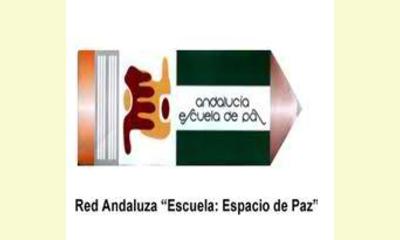|
|
The Junta of Andalucia (Spain): Malaga promotes coexistence and culture of peace
an article by I Vecinos, El diario digital de Málaga y la Costa del Sol
A total of 379 schools in the province of Málaga belong to the Andalusian Network: "Space for Peace," established by the Ministry of Education of the Government of Andalusia to promote coexistence through the development of values, attitudes, skills and habits. Of these, 89 are recognized by the Department as "Positive Social Centers," for which the province Málaga is "the most outstanding province in this regard."

click on photo to enlarge
As recalled by the Junta de Andalucía, the day of January 30, coinciding with the anniversary of Gandhi's death, is celebrated in many countries as the School Day of Non-violence and Peace. During this week, schools organize activities about the importance of peaceful conflict resolution and highlighting the values of coexistence, tolerance and solidarity, as well as to publicizes actions in these areas during the year.
Among the events organized is the awards ceremony of the second 'Tales for Peace' Contest, which involves the following seven centers of the capital committed to working together and living together in an inter-center project called 'School: Space for Peace ', the C.E.I.P Ramon Simonet, Manolo Garvayo and Severo Ochoa, the I.E.S Carlinda and Pablo Picasso and the schools Saint Trinity and Immaculate Virgin, and Santa Maria de la Victoria.
The contest was open to all students from the second year of primary school to the level of university and training circles. This year it includes an award for creativity. The objectives of the contest are to raise awareness of the work being done in the centers and to involve the entire school community of the project. The initial and main objective of the project is to raise awareness of the need to engage in positive coexistence.
In addition, there is an action plan for assimilation and acceptance of standards, content, values, attitudes, skills and positive living habits, elaborate norms facilitating the involvement, participation and integration of the educational community.
For its part, the IES Huerta Alta has organized a series of activities in which students participate in their own center, as well as IES Capellanía, Galileo and Gerald Brenan, the CEIP Maruja Mallo and San Sebastián de Alhaurín de la Torre, IES Sierra de Mijas y Ben Gabirol.. The program has included sports and environmental activities, as well as workshops, exhibitions, theater and performances. . .
Finally, the Annual Awards for the Promotion of a Culture of Peace and Coexistence in Andalusia Schools, for the 2012-2013 academic year have included first prizes to IES Professor Pablo del Saz of Marbella (Málaga) and the CEIP María de la O of Malaga, according to the statement by the regional government.
(Click here for a Spanish version of this article)
|








|
DISCUSSION
Question(s) related to this article:
Peace Studies in School Curricula, What would it take to make it happen around the world?
* * * * *
Latest reader comment:
During the Asian Educators Symposium, we found out that Peace Education is still not part of the school curriculum in most countries. However, the participating teachers have been incorporating peace education in their teaching subjects, such as English, social studies, and character education. We all agreed that love and the will to nurture peace in children are the most important basis for peace education. Even if peace education is not a part of the curriculum, peace can be taught through any subject. Whatever you are teaching, if it comes from the heart, then it will touch the minds of children.

|
|









